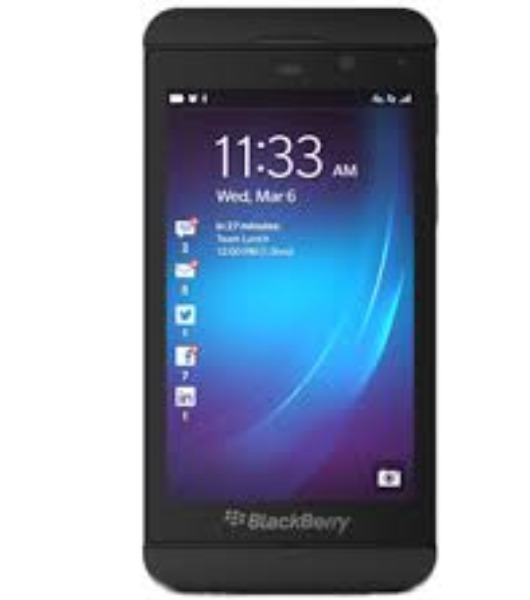


The BlackBerry Z10, launched in January 2013 by BlackBerry Limited, was the first device to run BlackBerry 10 OS, a QNX-based operating system aimed at competing with iOS and Android. Priced at $599/£499 at release, it features a 4.2-inch 768 x 1280 IPS LCD, Snapdragon S4 Plus chipset, 2GB RAM, and an 1800 mAh battery, targeting users with a full touchscreen experience. It includes an 8MP rear camera and 16GB storage, with a focus on gestures and the BlackBerry Hub for unified communications. In 2025, the Z10 is outdated, with BlackBerry 10 services discontinued in 2022, no 5G support, and limited app availability. Its historical significance as BlackBerry’s first touchscreen flagship appeals to collectors, available used for $30-$70.
|
Feature |
BlackBerry Z10 |
|
Release Date |
January 2013 |
|
Display |
4.2" IPS LCD, 768 x 1280, 355 ppi |
|
Processor |
Qualcomm Snapdragon S4 Plus MSM8960, 1.5 GHz Dual-core |
|
RAM |
2 GB |
|
Storage |
16 GB, microSD support (up to 64GB) |
|
Rear Camera |
8 MP (f/2.2, autofocus, BSI sensor), LED flash, 1080p video |
|
Front Camera |
2 MP |
|
Battery |
1800 mAh, removable |
|
OS |
BlackBerry 10 (discontinued) |
|
Build |
Plastic body, no IP rating |
|
Connectivity |
4G LTE, Wi-Fi 5, Bluetooth 4.0, NFC |
|
Price (Launch) |
$599 / £499 |
To make a modern BlackBerry Z10 competitive in 2025, the following enhancements could address its shortcomings while preserving its touchscreen design:
The BlackBerry Z10 was a bold step for BlackBerry in 2013, introducing a full touchscreen design and BlackBerry 10 OS to compete with iOS and Android. Its 4.2-inch display, gesture-based navigation, and BlackBerry Hub were innovative, but its launch was marred by a poorly received marketing campaign, including a confusing Super Bowl ad, as noted in historical accounts. In 2025, the Z10 is obsolete, with BlackBerry 10 services discontinued in 2022, no 5G support, and a limited app ecosystem, rendering it non-functional for modern use. The small 1800 mAh battery and outdated hardware further diminish its utility. For collectors or BlackBerry enthusiasts, a used Z10 priced at $30-$70 on platforms like eBay might hold nostalgic value as a piece of tech history. For most users, however, modern mid-range phones like the Samsung Galaxy A55 or Google Pixel 8a offer vastly superior performance, 5G support, and long-term software updates, making them far more practical choices in 2025.
The overall rating is based on reviews by our experts
No reviews yet.
|
How Is the Design? |
|
|
How is the Display? |
|
|
How is the Camera? |
|
|
How are the Features? |
|
|
How is the Connectivity |
|
|
How is the Usability? |
|
|
How is the Performance? |
|
|
How is the Battery Life? |
No prices available.